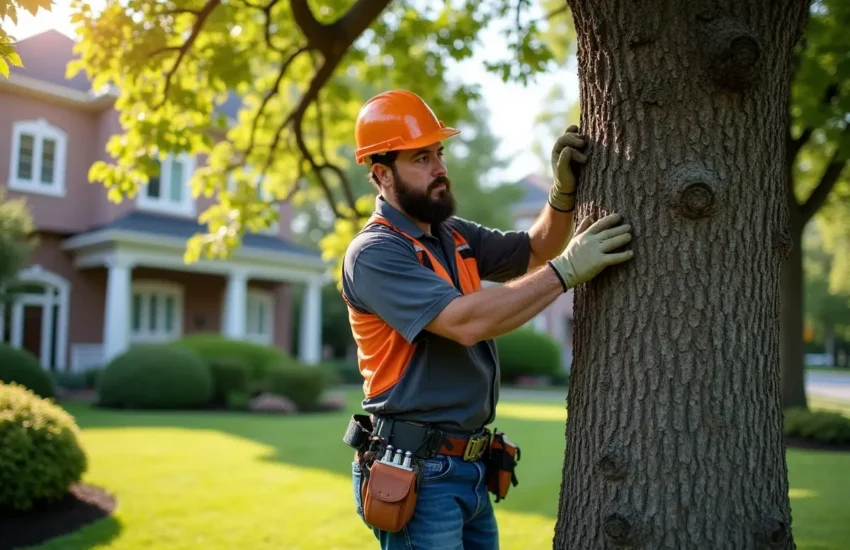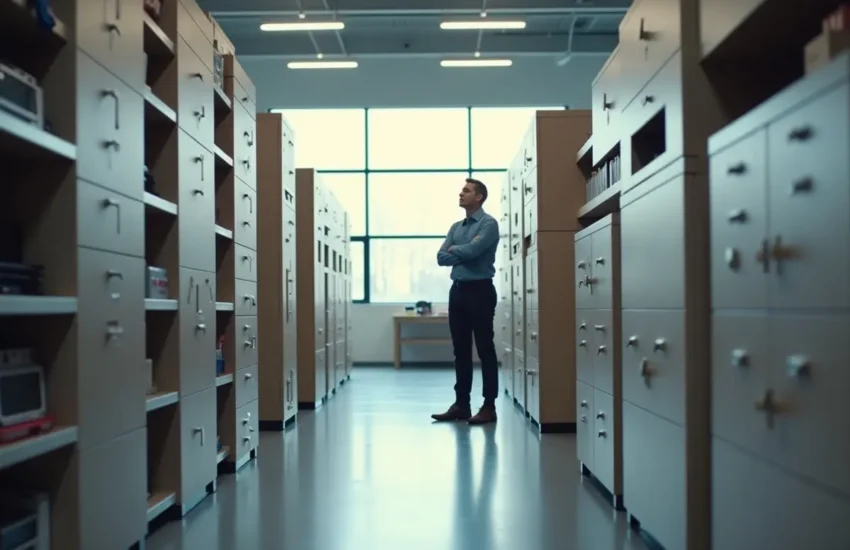Inspect and Protect: Your Guide to Roof Inspections in Katy, TX
Your home’s roof is its primary defense. It shields your family and belongings from the unpredictable elements. In Katy, TX, our roofs face unique challenges. Hot summers, strong winds, and sudden hailstorms can all take a toll. Often, this damage is not visible from the ground.
Ignoring these issues can lead to much bigger, more expensive problems later. This is where regular roof inspections become crucial. They are a proactive step in maintaining your property. A professional inspection helps catch small issues early, preventing costly repairs and extending your roof’s life.
This extensive guide will cover everything you need to know about roof inspections in Katy, TX. We’ll explain why they are so important, show you what signs mean you need an inspection, and explain what a professional inspection involves and how it can protect your home and wallet.
Katy, Texas, boasts a vibrant community and a climate that, while beautiful, can be relentlessly tough on residential and commercial roofs. Understanding these specific environmental pressures is the first step toward appreciating the critical role of regular roof inspections. Our roofs constantly battle elements that can significantly shorten their lifespan and compromise their integrity if left unchecked.
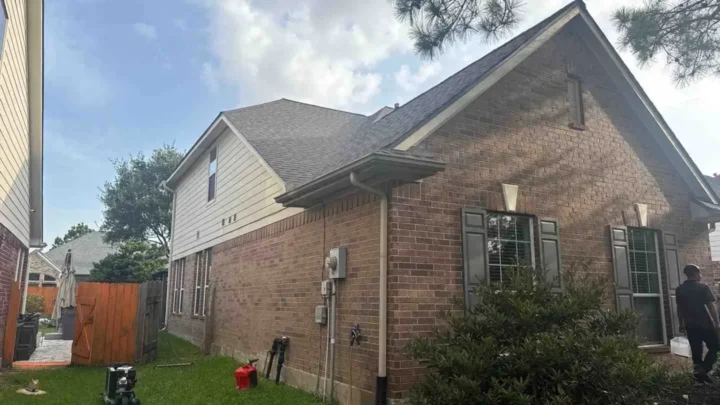
The Impact of Katy’s Weather on Your Roof
High humidity, frequent thunderstorms, and intense summer heat characterize Katy’s subtropical climate. These factors combine to create a challenging environment for any roofing material.
- Hail Damage: Katy is situated in what is often called “Hail Alley.” Hailstorms, ranging from pea-sized pellets to golf-ball-sized chunks, are common. Even seemingly small hailstones can cause significant, usually unnoticeable, damage to asphalt shingles, leading to granule loss, bruising, or cracking. This compromises the shingle’s protective layer, making it vulnerable to UV degradation and water intrusion.
- Hurricane Season and Strong Winds: Being relatively close to the Gulf Coast, Katy is susceptible to the outer bands and direct impacts of tropical storms and hurricanes. The accompanying high winds can lift, tear, or completely remove shingles, especially those already weakened. Wind damage can also lead to issues with flashing, gutters, and other roof components.
- UV Degradation and Intense Summer Sun: The scorching Texas summer sun’s intense ultraviolet (UV) radiation is a silent killer for many roofing materials. UV rays break down the asphalt in shingles, causing them to dry out, become brittle, and lose their protective granules. This process, known as thermal shock, accelerates aging and reduces the roof’s flexibility and ability to withstand other weather events.
- High Humidity and Moisture: Persistent humidity creates an ideal breeding ground for algae, moss, and mildew, which can degrade roofing materials over time. With heavy rainfall, moisture can reach attic spaces through compromised areas, leading to wood rot, mold growth, and structural damage.
These specific weather conditions underscore why a “set it and forget it” approach to roof maintenance is not viable in Katy. Regular inspections are not just a recommendation; they are necessary for protecting your investment and ensuring your home’s continued safety and comfort.
Proactive Maintenance vs. Reactive Repairs
The choice between proactive maintenance and reactive repairs is often the difference between a minor fix and a major, costly overhaul. For homeowners in Katy, this distinction is crucial:
- Identifying Minor Issues Early: A professional roof inspection can spot small problems, like missing granules, a slightly lifted shingle, or minor flashing damage, long before they escalate. If caught early, these issues are often inexpensive to fix.
- Preventing Water Intrusion: The most significant threat posed by roof damage is water intrusion. Even a tiny crack or a displaced shingle can allow water to seep into your attic, leading to damaged insulation, compromised ceiling drywall, electrical hazards, and the growth of hazardous mold. Proactive inspections seal these vulnerabilities before they become leaks.
- Avoiding Structural Damage: Prolonged water exposure can lead to wood rot in your roof decking, rafters, and even your home’s structural components. Repairing structural damage is significantly more complex and expensive than a simple roof repair.
- Maximizing Roof Longevity: By consistently addressing minor wear and tear, you can significantly extend the overall lifespan of your roof. This means postponing the substantial cost of a full roof replacement for as long as possible, providing excellent long-term value for your investment.
- Peace of Mind: Knowing that your roof has been thoroughly inspected by a professional and is in good condition offers invaluable peace of mind, especially as storm season approaches. It ensures the continued safety of your home and family.
Regular roof inspections are a proactive approach to maintaining your property. They help identify minor problems before escalating into more significant, costlier ones. It’s generally recommended that professional roof inspections be conducted at least twice a year, typically in the spring and fall, and especially after any significant weather event.
A Homeowner’s Guide to the Roof Inspection Katy, TX Process
Understanding when to call a professional and what a thorough inspection entails is crucial for maintaining your property’s integrity. Many roof problems are not immediately apparent from the ground, making professional assessment invaluable.
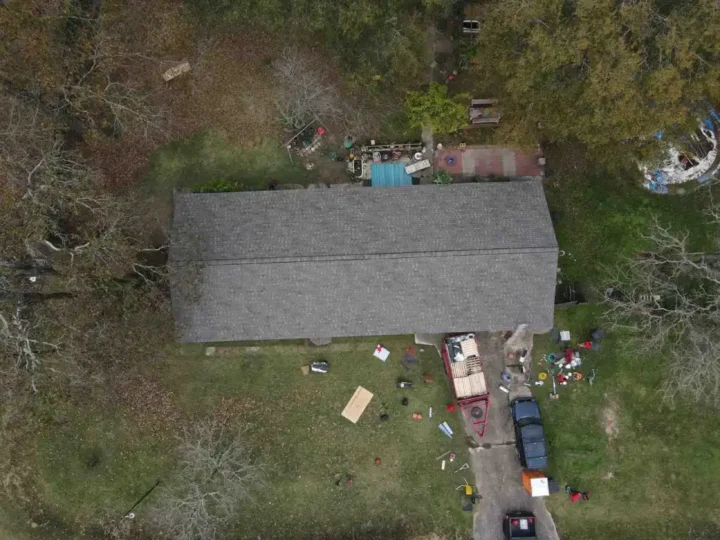
Telltale Signs Your Roof Needs a Professional Look
While professional inspections are always recommended, certain signs should prompt you to call a roofing expert immediately. These indicators suggest that your roof may already be compromised and require urgent attention:
- Water Stains on Ceilings or Walls: This is perhaps the most obvious sign of a leak. Water stains, discoloration, or peeling paint on your interior ceilings or walls indicate that water has breached your roof and is coming inside.
- Missing or Cracked Shingles: Visually inspect your roof from the ground (or use binoculars for a closer look). Missing shingles expose the underlying roof decking to the elements, while cracked or broken shingles lose their protective capabilities.
- Shingle Granules in Gutters: Asphalt shingles are coated with granules that protect them from UV rays. If you find a significant accumulation of these granules in your gutters or downspouts, it’s a sign that your shingles are deteriorating and losing their protective layer.
- Damaged Flashing Around Chimneys, Vents, or Skylights: Flashing is the metal or rubber material installed around roof penetrations (chimneys, vents, skylights) to create a watertight seal. If this flashing is bent, cracked, rusted, or missing, it’s a prime entry point for water.
- Sagging Roof Deck or Ridge Line: A visible sag or dip in your roofline or along the ridge indicates a serious structural issue, possibly due to water damage, inadequate support, or a weakened roof deck. This requires immediate professional assessment.
- Buckling or Curling Shingles: Buckling (wavy appearance) or curling (edges turning up or down) are often signs of moisture absorption, improper installation, or advanced aging, compromising the shingles ‘ ability to shed water effectively.
- Increased Energy Bills: A damaged or poorly insulated roof can lead to significant heat loss in winter and heat gain in summer, causing your HVAC system to work harder and drive up energy consumption.
If you observe any of these signs, it’s time to schedule a professional roof inspection.
What to Expect from a Professional Roof Inspection in Katy, TX
When you hire a reputable roofing company for an inspection, you can expect a comprehensive and systematic evaluation of your entire roofing system. A thorough inspection goes far beyond a glance from the ground. It typically includes:
Exterior Roof Assessment
The inspector will carefully examine the entire surface of your roof. This includes looking for:
- Missing, cracked, curled, or blistering shingles.
- Signs of granule loss.
- Loose or exposed nails.
- Moss, algae, or fungal growth.
- Damage from hail, wind, or debris.
- Proper alignment and condition of shingles.
- Overall wear and tear, and estimated remaining lifespan.
Roof Components and Penetrations
Every element on your roof plays a role in its protection. The inspector will check:
- Flashing: Around chimneys, skylights, vents, and valleys for proper sealing and integrity.
- Vents: Condition of plumbing vents, attic vents (ridge vents, static vents, power vents), and their seals.
- Skylights: For cracks, leaks, or seal failures.
- Chimneys: Condition of the chimney cap, masonry, and flashing.
Gutter System Evaluation
Gutters are crucial for directing water away from your home’s foundation. The inspection will cover:
- Clogs or debris accumulation.
- Proper slope and drainage.
- Damage, rust, or leaks in the gutters themselves.
- Condition and attachment of downspouts.
Attic and Interior Check
This is a vital part of the inspection, as it reveals issues not visible from the exterior:
- Water Stains: Looking for signs of leaks on the underside of the roof deck, rafters, or insulation.
- Mold or Mildew: Indicators of moisture problems.
- Ventilation: Assessing proper attic ventilation to prevent heat and moisture buildup, which can damage the roof structure and insulation.
- Insulation: Checking for adequate insulation and signs of dampness.
- Light Penetration: Look for any outside light visible from the attic, which indicates holes or gaps in the roof.
Structural Integrity
While not a full structural engineering review, the inspector will look for signs of structural issues, such as sagging rafters or decking.
A comprehensive roof inspection in Katy, TX, will provide a complete picture of your roof’s health, identifying both evident and hidden issues that could lead to significant problems. Utilizing experts with the right tools and knowledge ensures a safe and efficient inspection.
The Benefits of Professional Inspection Over a DIY Approach
While a homeowner can perform a basic visual check from the ground, attempting a comprehensive DIY roof inspection comes with significant risks and limitations. Professional inspectors offer expertise, safety, and a level of detail that a layperson cannot match.
Expertise and Safety
- Trained Eye for Damage: Professional roof inspectors undergo extensive training and possess a keen eye for identifying subtle signs of damage that an untrained homeowner might miss. They are familiar with various roofing materials, common failure points, and how Katy’s weather affects roofs. This includes recognizing manufacturer defects, poor installation, and even early signs of UV degradation.
- Proper Safety Protocols: Climbing onto a roof, especially a steep or high one, is inherently dangerous. Professionals are equipped with specialized safety gear (harnesses, ropes, non-slip footwear) and follow strict safety protocols to prevent falls and injuries. DIY efforts can be risky, possibly leading to personal injury.
- Specialized Equipment: Beyond safety gear, professional inspectors often use tools like moisture meters, infrared cameras (for detecting hidden leaks or insulation issues), and even drones for inaccessible or high-risk areas. This technology allows for a more thorough and accurate assessment.
- Liability and Insurance: Reputable roofing companies carry liability insurance, which protects both their team and your property in case of an accident during the inspection. A DIY accident could lead to costly medical bills or property damage that falls squarely on the homeowner.
Comprehensive Reporting for Your Records
One of the most valuable aspects of a professional roof inspection is the detailed report you receive afterward. This isn’t just a verbal summary; it’s a comprehensive document that serves multiple purposes:
- Detailed Documentation: The report typically includes a summary of findings, often accompanied by photographic evidence of any identified issues. This visual proof is invaluable for understanding the condition of your roof.
- Actionable Recommendations: Beyond simply pointing out problems, the report will provide clear, actionable recommendations for repairs, maintenance, or replacement. It may prioritize issues based on urgency and potential impact.
- Useful for Insurance Claims: In the event of storm damage, a professional inspection report with photographic evidence can be crucial for filing a successful insurance claim. It provides objective documentation of the damage before repairs begin.
- Future Maintenance Planning: The report is a baseline for your roof’s health. It helps you track its condition, plan for future maintenance, and make informed decisions about its lifespan and potential replacement.
- Real Estate Transactions: If you’re buying or selling a home, a professional roof inspection report provides transparency and can be a key negotiation tool, offering peace of mind to all parties involved.
By opting for a professional inspection, you gain peace of mind, ensure safety, and receive a comprehensive understanding of your roof’s condition, helping you effectively protect your home and investment.
Understanding Your Roof Inspection Report and Costs
Once your roof has been thoroughly inspected, the next step is to understand the findings presented in the professional report and the associated costs. This report is a roadmap for your roof’s future, detailing its current condition and the necessary next steps.
Decoding Your Roof Inspection Report
A well-prepared roof inspection report should be clear, concise, and easy to understand, even for homeowners without extensive roofing knowledge. Here’s what you can typically expect to find:
- Executive Summary: A brief overview of the roof’s overall condition, highlighting significant findings and immediate concerns.
- Detailed Findings: This section will break down the inspection by specific areas and components. For example, it will list observations for shingles (e.g., granule loss, cracking, blistering), flashing (e.g., rust, gaps, improper installation), gutters (e.g., clogs, damage), and attic (e.g., signs of leaks, mold, ventilation issues).
- Photographic Evidence: High-quality photos or drone footage will accompany the written descriptions, visually documenting any damage or areas of concern. This is incredibly helpful for understanding the issues and for insurance purposes.
- Repair vs. Replacement Recommendations: The report will clearly state whether identified issues require minor maintenance, significant repairs, or if a complete roof replacement is recommended. It may also provide an estimated remaining lifespan for your current roof.
- Estimated Costs: For recommended repairs or replacement, the report should include estimated costs. This allows you to budget and plan accordingly.
- Maintenance Suggestions: Beyond immediate repairs, the report might offer general maintenance tips to prolong your roof’s life, such as gutter cleaning schedules or recommendations for improving attic ventilation.
This detailed documentation ensures transparency and empowers you to make informed decisions about your roof’s health.
The Cost and Value of a Roof Inspection Katy, TX
The cost of a professional roof inspection in Katy, TX, can vary. Some roofing companies offer complimentary initial assessments, particularly if they suspect storm damage or if you’re looking for a repair quote. These free assessments might be a visual check from the ground or a quick walk-through.
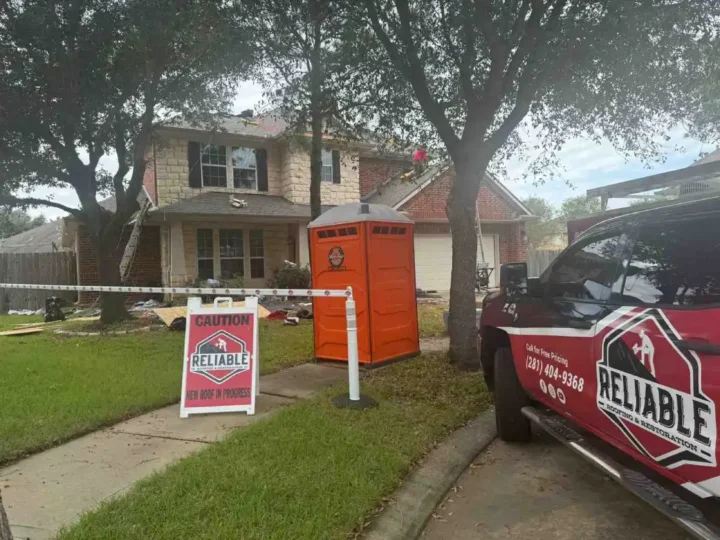
There might be a fee for a more in-depth, comprehensive analysis – especially for pre-purchase inspections, warranty inspections, or detailed condition reports. This fee typically ranges from $150 to $600, depending on the size and complexity of your roof, the type of inspection, and the technology used (e.g., drone inspections). Some companies may credit this inspection fee towards any subsequent repairs or replacement services you undertake with them.
While an inspection fee might seem an added expense, consider it a wise investment; the value it provides far outweighs the cost:
- Long-Term Savings: Identifying minor issues early prevents them from escalating into major problems that could cost thousands of dollars in extensive repairs or premature roof replacement. For context, the cost of roofing materials alone can be significant. The pitch, waste factor, and type of shingle strongly determine pricing. Your average asphalt shingle will cost $300-$450 per square (a “square” is 100 square feet of roofing material). This doesn’t even include labor, disposal, and other project costs. Catching a problem early can save you from purchasing many squares of new shingles.
- Protecting Property Value: A well-maintained roof is a significant asset to your home’s overall value. Conversely, a damaged roof can deter potential buyers or lead to lower appraisals.
- Informed Decision-Making: The inspection report gives you leverage and knowledge, whether negotiating a real estate deal, filing an insurance claim, or planning your home maintenance budget.
- Peace of Mind: Knowing the actual condition of your roof provides invaluable peace of mind, especially during Katy’s unpredictable weather seasons.
Investing in a professional roof inspection is a small upfront cost that can prevent much larger financial burdens, safeguarding your most valuable asset.
How to Choose a Reputable Roofing Contractor in Katy
Finding a trustworthy professional is as important as the inspection itself. A reputable contractor will provide an accurate assessment and offer fair and honest recommendations, whether for a minor repair or a complete roof replacement. Given the prevalence of storm chasers and less-than-reputable companies, vetting your choices carefully is paramount.
Vetting Local Roofing Professionals
Here’s a list of essential questions to ask and factors to consider when choosing a roofing contractor in Katy:
- Check for a Local Office and Established Presence: Does the company have a physical office in Katy or the surrounding Houston metro area? A local presence indicates a long-term commitment to the community and easier accountability. Be wary of companies that only operate remotely or pop up after major storms.
- Verify General Liability Insurance and Workers’ Compensation: This is non-negotiable. Request proof of both. General liability insurance protects your property in case of damage caused by the contractor. Workers’ compensation protects you from liability if a worker gets injured on your property.
- Ask for Recent Local References: A reputable contractor should happily provide contact information for recent clients in your area. Speak to these references about their experience, the quality of work, adherence to timelines, and communication.
- Read Online Reviews and Check Ratings: Use platforms like Google, Yelp, the Better Business Bureau (BBB), and local community forums. Look for consistent positive feedback and how the company responds to negative reviews.
- Request a Detailed Written Estimate: The estimate should be comprehensive, clearly outlining the scope of work, materials to be used (brand, type, color), project timeline, payment schedule, and warranty information (material and labor). Avoid contractors who provide vague verbal quotes.
- Inquire About Certifications and Training: Does the company hold certifications from major roofing manufacturers (e.g., GAF Master Elite, Owens Corning Platinum Preferred Contractor)? These certifications indicate that the contractor meets the manufacturer’s high-quality and training standards and often allow them to offer improved warranties.
- Understand Their Inspection Process: Ask how they conduct inspections. Do they go on the roof? Do they check the attic? Do they use drones or other advanced tools? A thorough process indicates a commitment to accuracy.
- Discuss Warranty Options: Understand the warranties offered on the materials (from the manufacturer) and the contractor’s artistry.
- Confirm Licensing (if applicable): While Texas does not have a statewide licensing requirement for roofing contractors, some cities or counties might. Verify any local licensing or registration requirements.
By diligently vetting potential roofing contractors, you increase your chances of hiring a reliable, honest, and skilled professional who will provide an accurate inspection and quality service for your Katy home.
Frequently Asked Questions about Roof Inspections
Homeowners often have similar questions when considering a roof inspection. Here are answers to some of the most common inquiries:
How often should my roof be inspected?
Having your roof professionally inspected at least once a year is generally recommended. This annual check-up helps catch wear and tear before it becomes significant. However, scheduling an inspection after any major weather event, such as a hailstorm, strong windstorm, or prolonged heavy rainfall, is crucial. These events can cause immediate damage that might not be visible from the ground but can lead to leaks and further issues if left unaddressed. Many experts also suggest inspections in the spring (to assess winter damage) and fall (to prepare for winter).
Can a roof inspection really save me money?
Yes, unequivocally. A roof inspection is a prime example of how a small, proactive investment can lead to significant long-term savings. By identifying and addressing minor issues like missing shingles, failing flashing around a vent, or a compromised seal, you can prevent significant water damage to your roof deck, attic insulation, ceilings, and interior walls.
The cost of repairing these secondary damages, not to mention the much higher cost of a premature complete roof replacement, far outweighs the cost of a regular inspection and minor repairs. Early detection helps you avoid emergency repairs and extends the overall lifespan of your roof, delaying the need for a costly replacement.
What are the most common roofing materials for homes in Katy, TX?
Like much of Texas, most homes in the Katy area primarily use asphalt shingles. This popularity stems from their cost-effectiveness, versatility in style and color, and relatively easy installation. Within asphalt shingles, popular choices include:
- Durable Laminated Shingles: Also known as architectural or dimensional shingles, these are thicker, more durable, and offer a more textured, aesthetically pleasing look (e.g., GAF Timberline HDZ or CertainTeed Landmark). They are designed for improved wind resistance and longevity.
- Impact Resistant (IR) Shingles: Given Katy’s susceptibility to hail, many homeowners opt for IR shingles. These are specifically designed to withstand hail impacts better than standard shingles, often qualifying for insurance discounts.
- High-End Designer Shingles: For homeowners seeking a premium aesthetic, designer shingles mimic the look of natural slate or wood shakes but with the benefits and lower maintenance of asphalt.
While asphalt shingles dominate, some homes might also have metal roofs (known for durability and energy efficiency) or tile roofs (common in Spanish or Mediterranean architectural styles), though these are less common for typical residential construction in Katy.
Conclusion
In Katy, TX, where our homes brave everything from scorching sun to sudden hailstorms, the roof is our first and most vital line of defense. Ignoring its condition is not just a gamble; it’s an invitation for costly, disruptive problems down the line.
A professional roof inspection is more than just a service; it’s a proactive approach to protecting your home and investment. It’s about identifying minor issues before they escalate into major crises, extending your roof’s lifespan, and ensuring your family’s continued safety and comfort. Professional inspectors’ expertise, safety, and comprehensive reporting far outweigh any perceived benefits of a DIY approach.
By understanding the specific challenges posed by Katy’s climate, recognizing the telltale signs of roof damage, and knowing what to expect from a thorough inspection, you can make informed decisions. Choosing a reputable local contractor ensures you receive an honest assessment and quality service.
Scheduling a regular roof inspection is a small step that yields significant protection. It’s a key part of responsible homeownership in Katy, TX, ensuring peace of mind and safeguarding your most valuable asset for years. Don’t wait for a leak or storm to hit; inspect and protect your home today.

